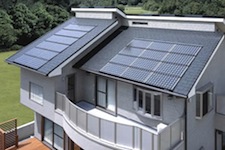The steady withdrawal of solar PV incentives, at both state and federal level, have lead to concerns by some consumers that the cost of solar power is set to soar. However, industry insights offered by Solar Choices‘ team of Solar Energy Brokers suggest that there has never been a better time to invest.
The solar PV market is currently being affected by two main factors:
- The falling cost of solar PV technology;
- The withdrawal of solar PV feed-in tariffs at both federal and state level.
The falling cost of solar PV technology
The cost of purchasing and installing a solar PV system has hit an all-time low in Australia. This is in part due to the strong Australian dollar and increased competition amongst installers and manufacturers. The withdrawal of feed in tariffs has been a key factor in increasing competition and, therefore, driving down price.In addition to market factors within Australia the reaction of the Chinese governments to the demand for solar PV between 2008 and 2011 has bee instrumental in creating a market full of low cost solar technology.
In a bid to establish China as a dominant manufacturer and fuel the country’s nascent tech industry the government offered massive incentives to manufacturers, this supplied the initial boom across Europe but after many governments withdrew their feed-in tariffs demand fell. This has lead to several German manufacturers experiencing financial difficulties as they struggle to compete with low priced Chinese components.
Although the Chinese government has taken steps to absorb some of this extra stock by increasing the Chinas solar energy targets forecasts predict that there will be excess solar stock until 2015, ensuring that customers are guaranteed competitive rates for solar PV panels.
The withdrawal of solar PV feed-in tariffs
There have been several changes in Federal and State feed-in tariffs over the past 18 months with further announcements expected in the latter part of 2012. In early 2011, New South Wales and Western Australia scrapped their subsidisation schemes for small-scale solar PV. Similarly, Victoria and South Australia reduced their small-scale solar subsidies significantly. The ACT switched to a one-for-one tariff from a set rate. Queensland, who previously maintained their original solar feed-in tariff, changed their Solar Bonus Scheme feed-in tariff as of 10 July 2012 from 44 cents per kilowatt hour to 8 cents per kilowatt hour.
In addition to withdrawals at state level, Federal incentives have also been downscaled – a sharp drop in the REC/STC price from $40 to as low as $16 (currently around $30) and a reduction of the REC multiplier, which incentivised small-scale solar systems.
So what does this mean for the customer?
Despite the withdrawal of State and Federal incentives there has never been a better time to invest in a solar power system. Escalating electricity costs and alternative finance options still make solar energy an attractive option at both residential and commercial levels.
Recent research from the Melbourne Energy Institute, based at the University of Melbourne, predicts that the cost of electricity will increase to compensate for lower peak time demand caused by the uptake of small scale renewable technologies. As our reliance on the grid decreases utilities managers will be forced to increase the cost of energy to compensate. This means that going forward the payback time will decrease and the financial benefits of installing solar PV panels will increase.
To ensure our customers get the best deal Solar Choice, as Australia’s Solar Energy Brokerage service, manages a network of over 70 installers Australia-wide, representing a broad cross-section of the solar PV installer market. Since our foundation in 2008 we have helped over 105,000 households get the right solar deal. This puts the company in a unique position with a ‘bird’s eye view’ of the industry and and its trends, including which components are used regularly, which ones are in greatest demand, and the cost of completed installations after the Federal Solar Credits rebate.
According to the Solar Choice team, prices for most systems have dropped significantly since June of 2011. The price drop followed the announcement of a reduction of the Federal solar power incentive, as well as the total withdrawal of the NSW Solar Bonus scheme, the program which drove NSW to become the largest solar PV market in the country.
For more information please contact our Solar Broker on 1300 78 72 73 or complete the Solar Quote Comparison.
© 2012 Solar Choice Pty Ltd
- NSW Club industry choosing solar power, with help from Solar Choice - 16 October, 2014
- 100% Renewables celebrates solar BBQ success - 26 February, 2013
- Coal fired power station in Queensland to be converted to ‘clean energy park’ - 21 February, 2013
